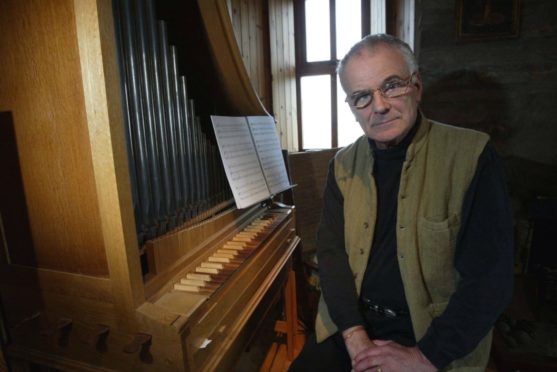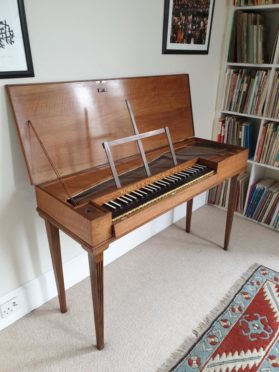For more than a quarter of a century it went everywhere with him and was the instrument on which some of the greatest classical works of the age were composed.
Now the clavichord owned by the former Master of the Queen’s Music, Peter Maxwell Davies, is being offered for sale to raise funds for struggling young composers in the pandemic.
Peter was widely considered one of the greatest composers of the past 200 years.
He died in March 2016 aged 81 at his home on Sanday in Orkney after losing a long battle with an aggressive form of leukaemia.
Known to his friends as Max, Peter Maxwell Davies composed more than 300 works in his career. These included ten symphonies and operas, such as The Lighthouse – based on the disappearance of the three keepers of the Flannan Islands Lighthouse off the main Outer Hebrides.
Farewell to Stromness and Orkney Wedding With Sunrise are also among the most popular of recent classics.
Cherished instrument
Max was knighted in 1987 and became Master of the Queen’s Music in 2004, the musical equivalent of the Poet Laureate.
But for around 25 years he had carted around the country his beloved Robert Goble clavichord, which he found was the perfect size for fitting in flats or when he moved to a near derelict croft house on the island of Hoy – where it was carried up a steep hill as there was no road for some distance.
Max acquired the instrument when it was made in 1960. Though he composed primarily at his desk, Sir Peter would use the clavichord to confirm what was in his mind or on the manuscript paper in front of him.
Around 20 years ago it was given to a close friend on Orkney.
She has now donated it to The Max Trust for sale.
Max wrote a piece Four Lessons for Two Clavichords, first performed at Dartington Summer School by Bernard Roberts and Sylvia Junge in 1978.
Lifelong friend Ms Junge and trustee said:”This is a unique chance to acquire a piece of musical history.
“It is historically priceless having been Max’s principal instrument for over two decades. He had it transported from Dorset to Orkney and all over the country. He composed so many of his works on it – it is fair to say some of the greatest works of the last century.
“It needs some attention, but will be perfectly playable again. We are inviting offers from individuals and institutions and hope it will raise many thousands for such a great cause of helping young composers which Max passionately believed in.”
Peter had lived on the island of Sanday for many years and left instructions that he wished to be buried there.
He also left instructions to ensure his musical legacy lived on.
He donated all his manuscripts and other musical documents to the British Library in London and asked that a chunk of his estate be used each year “to support a musical activity in a surprising place”.
Open to offers
He also asked for ‘The Max Trust’ to be set up in his name to support his ‘musical and educational legacy’.
Sally Groves, a close friend and former creative director of Schott Music, which published Maxwell Davies’ works, was appointed as his musical executor.
Offers for the clavichord can be made to her at sallygroves49@gmail.com
Salford-born Maxwell Davies was one of Britain’s most influential modern composers.
He was a self-confessed republican but after meeting and working with the Queen he said he had come to realise that there is a lot to be said for the monarchy.
In the 2014 New Year Honours List, Sir Peter was made a Member of the Order of the Companions of Honour for services to music. Only weeks before his death he was awarded the Royal Philharmonic Society’s Gold Medal, the highest accolade it can bestow.
In 2000, Max declared that he would be ‘happy to be remembered by two tunes and a dictionary footnote’.
Brilliantly obsessed
“In reality, his status as one of the leading international and highly distinguished composers of the post-war period is widely acknowledged, his position firmly cemented with six decades’ worth of high profile, worldwide performances of his music and extensive critical and scholarly engagement with his oeuvre,” wrote Dr. Nicholas Jones of the School of Music at Cardiff University.
“To put it simply: Davies was possessed, come what may, with an obsessive compulsion – a dogged inner impulse – to compose.”

